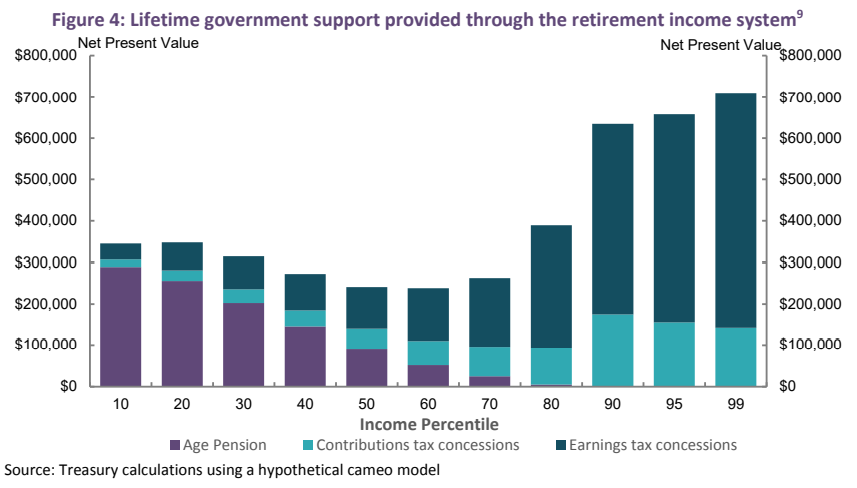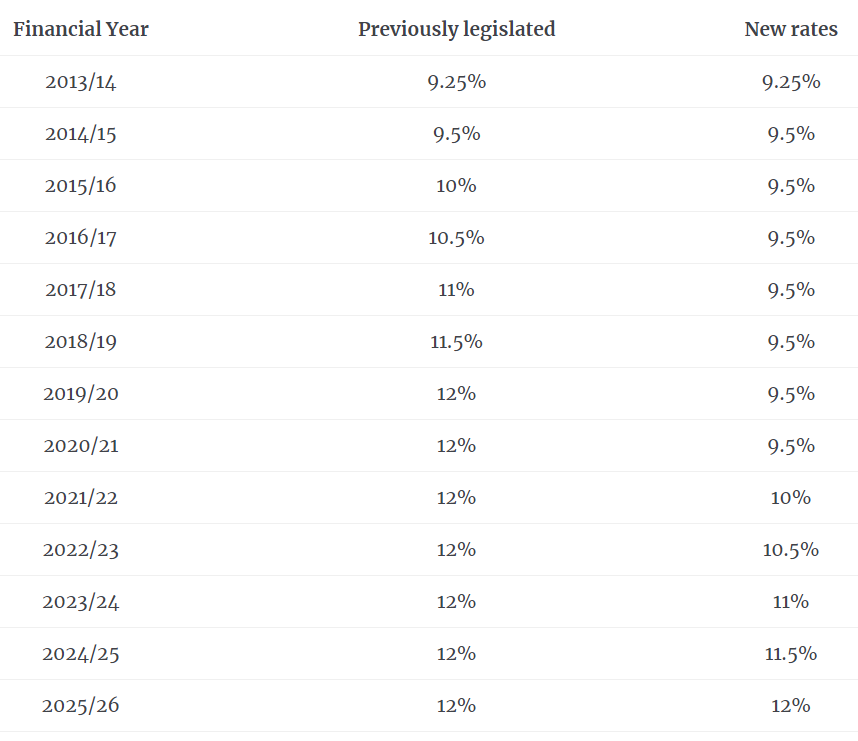For years MacroBusiness has argued that Australia’s superannuation guarantee (SG) should not be raised from the current level of 9.5% to 12%.
Our arguments against lifting the SG centre around four key issues.
First, superannuation concessions are grossly inequitable and favour high income earners. This inequity is illustrated clearly by the below Australian Treasury chart, which shows that the top 1% of earners will receive roughly 14-times the taxpayer contributions to their personal superannuation accounts as the bottom 10% of income earners:

Viewed in this light, Australia’s superannuation system is more of a tax avoidance scheme than a retirement scheme.
Second, lifting the SG would come directly out of workers’ take-home wages, which poses a particular problem for low-income earners already struggling to survive paycheck to paycheck.
Third, superannuation concessions cost the Federal Budget an obscene $43 billion a year. And because they are so poorly targeted and go to where they are not needed (i.e. high income earners), superannuation costs the federal budget far more than it saves in Aged Pension costs, as confirmed by the Henry Tax Review, the Grattan Institute and actuaries Rice Warner.
Finally, Australia’s superannuation system is highly inefficient. Management fees are astronomical with Australian households spending twice as much every year on super fees than they do on electricity. The number of people employed in superannuation is also astronomical, on par with Australia’s entire defence force and dwarfing Australia’s entire welfare system.
Before the COVID-19 pandemic struck, there was already huge question marks being asked over whether the SG should be lifted.
Now with mass unemployment looming, alongside deep cuts to household disposable income, the planned lifting of the SG is certain to be jettisoned.
As shown in the next table, the SG is scheduled to rise by 0.5% every year starting from 2021-22:

Thus, it will drain wages at the same time as Australia is still trying to recover from its biggest economic downturn since the Great Depression.
The federal budget is also likely be in a deep hole and there will remain a large demand deficit across the Australian economy.
Therefore, the absolute last thing the Australian economy will need is to have billions of dollars of disposable income garnished from the very people that have the highest marginal propensity to consume (i.e. lower income earners).
Lifting the SG to 12% would act like a tax increase on lower income earners, obliterating disposable income and consumption at the very worst time for the economy.

